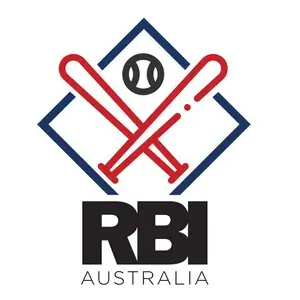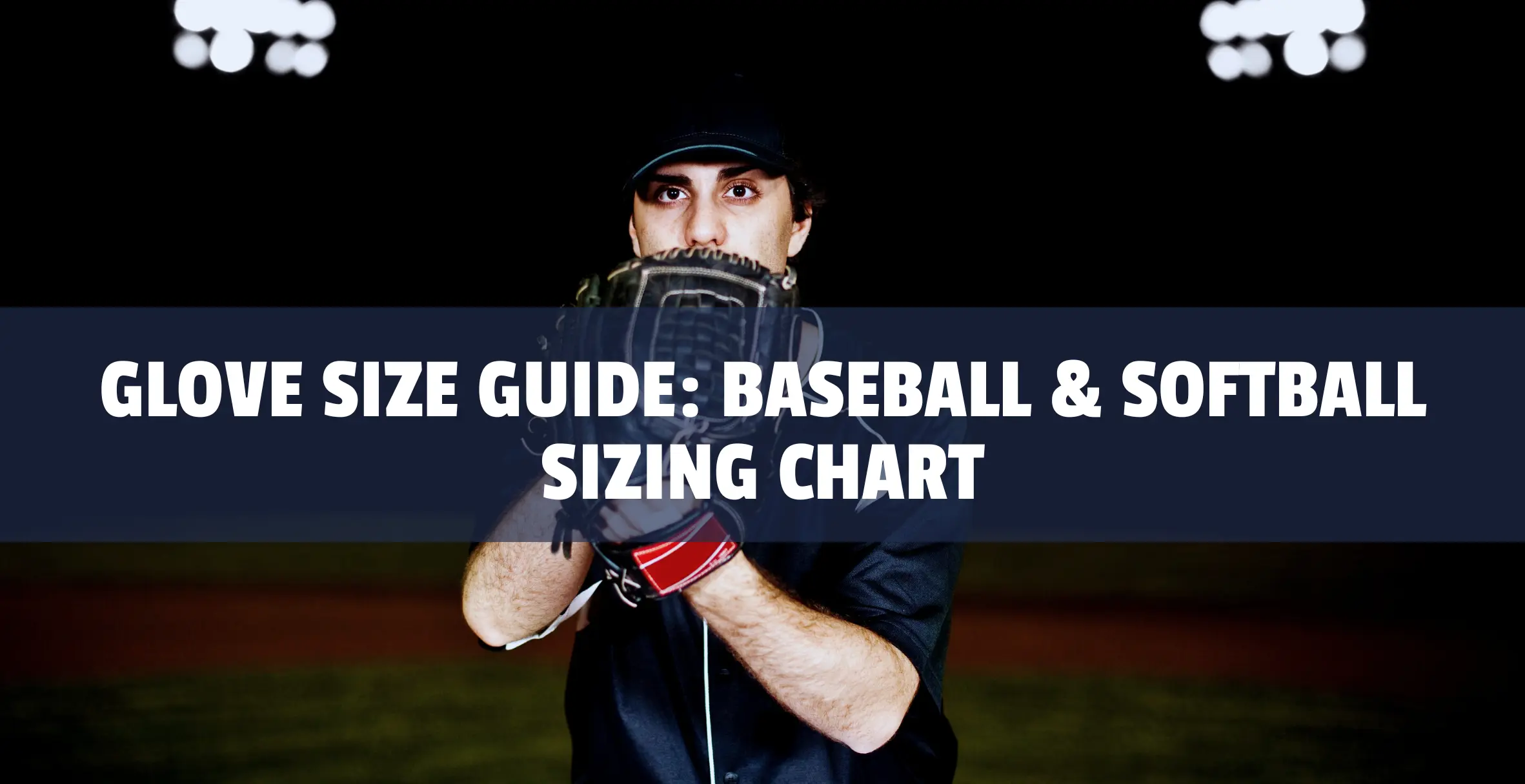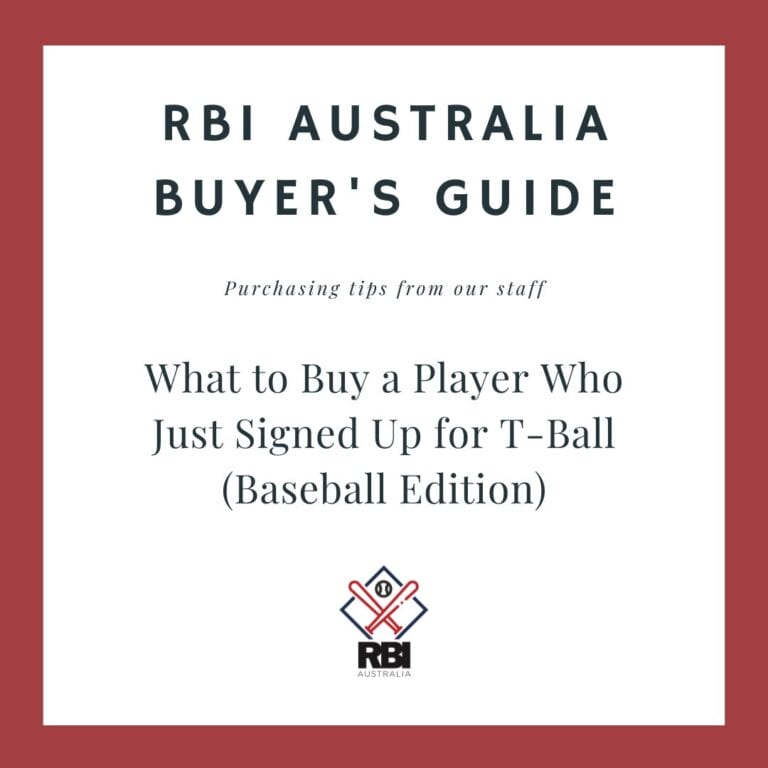GLOVE SIZE GUIDE: BASEBALL & SOFTBALL GLOVE SIZING CHART
PICKING OUT THE RIGHT GLOVE
Let us help you choose the right glove for your position and playing style! This glove size guide will help you find the perfect glove to advance your game, whether you are a novice or a seasoned player. We also included baseball and softball sizing charts below.
Gloves are essential pieces of gear for baseball and softball players of all ages and skill levels. To meet the needs of different players, these gloves come in a wide variety of sizes and designs. The comfort, effectiveness, and safety of a player are affected by proper glove selection.
Baseball Glove Size Chart
Below, we have provided a baseball glove sizing chart based on the player’s age and position.


Fastpitch Softball Glove Size Chart
Below, we have provided a fastpitch softball glove sizing chart based on the player’s age and position.


Slowpitch Softball Glove Size Chart
Below, we have provided a fastpitch softball glove sizing chart based on the player’s position.


Baseball/Softball Glove Measurements
Because we are always looking for ways to make things easier for our customers, RBI Australia has included the sizes of the gloves in our product descriptions. But here is a quick guide for measuring gloves in case you need it.
The size of a softball/baseball glove is typically engraved into the leather on the thumb or pinky finger. Fielder’s gloves normally come in sizes between 8 and 15 inches, whereas catcher’s mitts can measure up to 35 inches.
To give you an example, this is the Wilson A2000 M1DSS 33.5” Catcher’s Baseball Glove and the size (33.5”) is engraved on the glove.
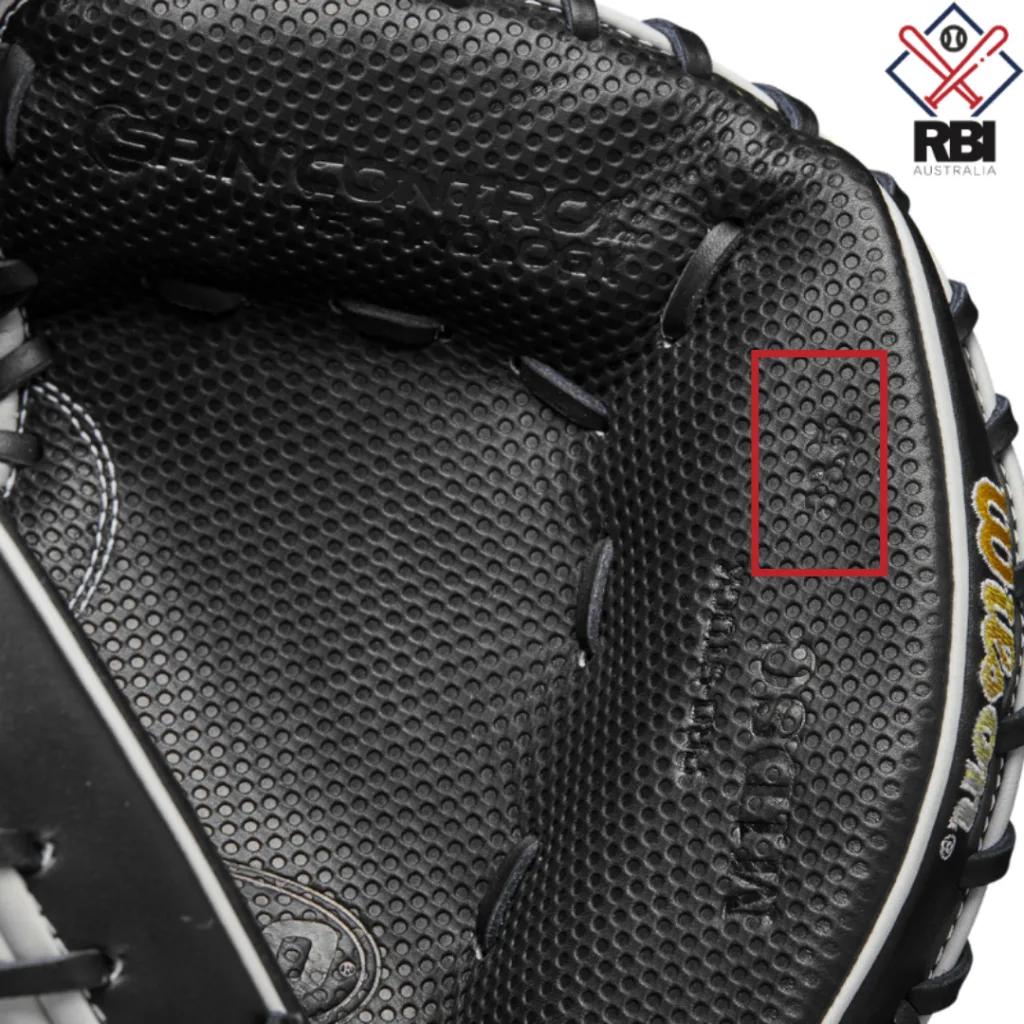

However, if you need to measure a glove whose size isn’t marked on it, you can do so by using a fabric tape measure. Measure down the glove from the top of the index finger, following the curve of the pocket until you reach the centre of the heel.
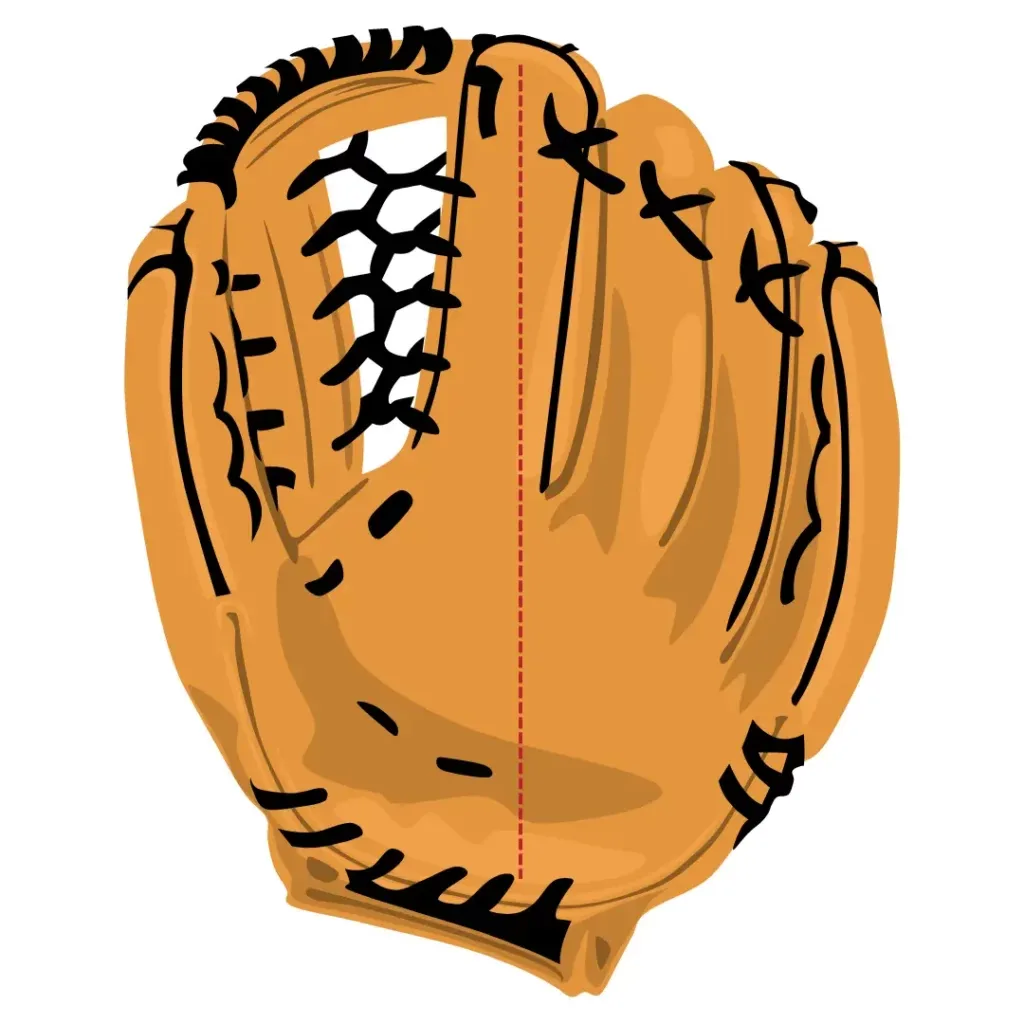

Things to Consider when Buying a Baseball/Softball Glove
Aside from age and position, there are also some other factors to consider when picking out the perfect glove:
Type of Throw
This refers to the hand a player uses to throw the ball, not the hand that has the glove on.
- LHT: Left hand thrower. Throws with their left hand while donning a right glove.
- RHT: Right hand thrower. Throws with their right hand while donning a left glove.
Material
Gloves can be made from a variety of materials, including leather, mesh, treated leather, and synthetic materials. Among these, leather is favoured by most players for its durability and comfort.
Players might also like treated leather gloves that have been pre-conditioned using oils to shorten the break-in period. Some might even prefer a lighter glove, in which case a meshed-back glove might be an excellent choice. Given that synthetic gloves are the lightest and most affordable glove available, they are a suitable choice for younger players.
Pocket Size
Your choice of pocket size will definitely be influenced by the position you play. An outfielder’s glove, for instance, will have a larger pocket than a middle infielder’s, making it easier for outfielders to grab fly balls. Short stops and second basemen (middle infielders) typically have shallower pockets, enabling them to get the ball out of the glove quicker, which is crucial during double plays.
Padding
The padding on the glove depends on the player’s position. In order to protect their hands from pitcher’s throws, catcher’s mitts often have more padding. Other positions like first base and third base may also need more padding.
Webbing
Different webbing styles can have an effect on a player’s performance. A looser stitch webbing is frequently used for the infielder’s glove because it offers better control and enables quicker ball release without accumulating large clumps of dirt.
Conversely, outfielders typically prefer gloves with open webs because they provide better visibility and act as a sun protection. When picking out a glove, there are typically 6 types of webbing to consider. The position you play should also be taken into account when determining which kind of webbing to utilise.
Recommended Baseball Glove Web Type by Position
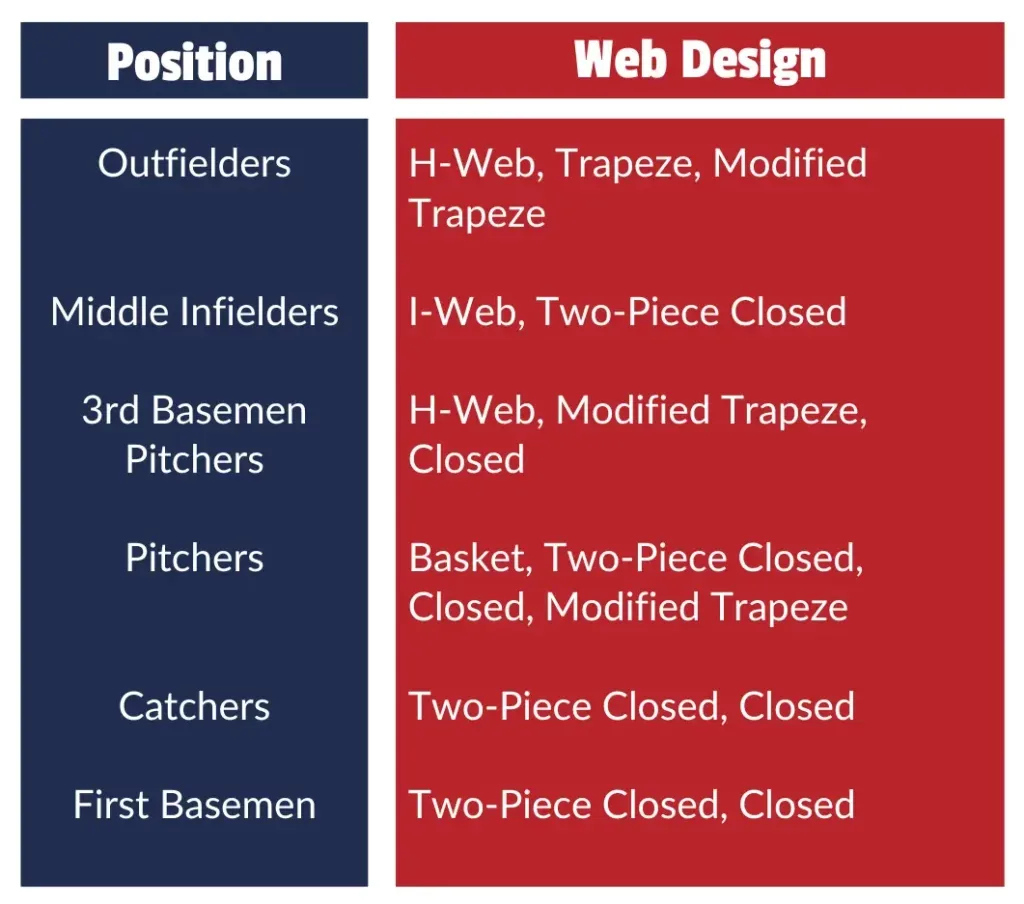

Recommended Fastpitch Glove Web Type by Position


Check out RBI Australia’s range of softball gloves and baseball gloves!
